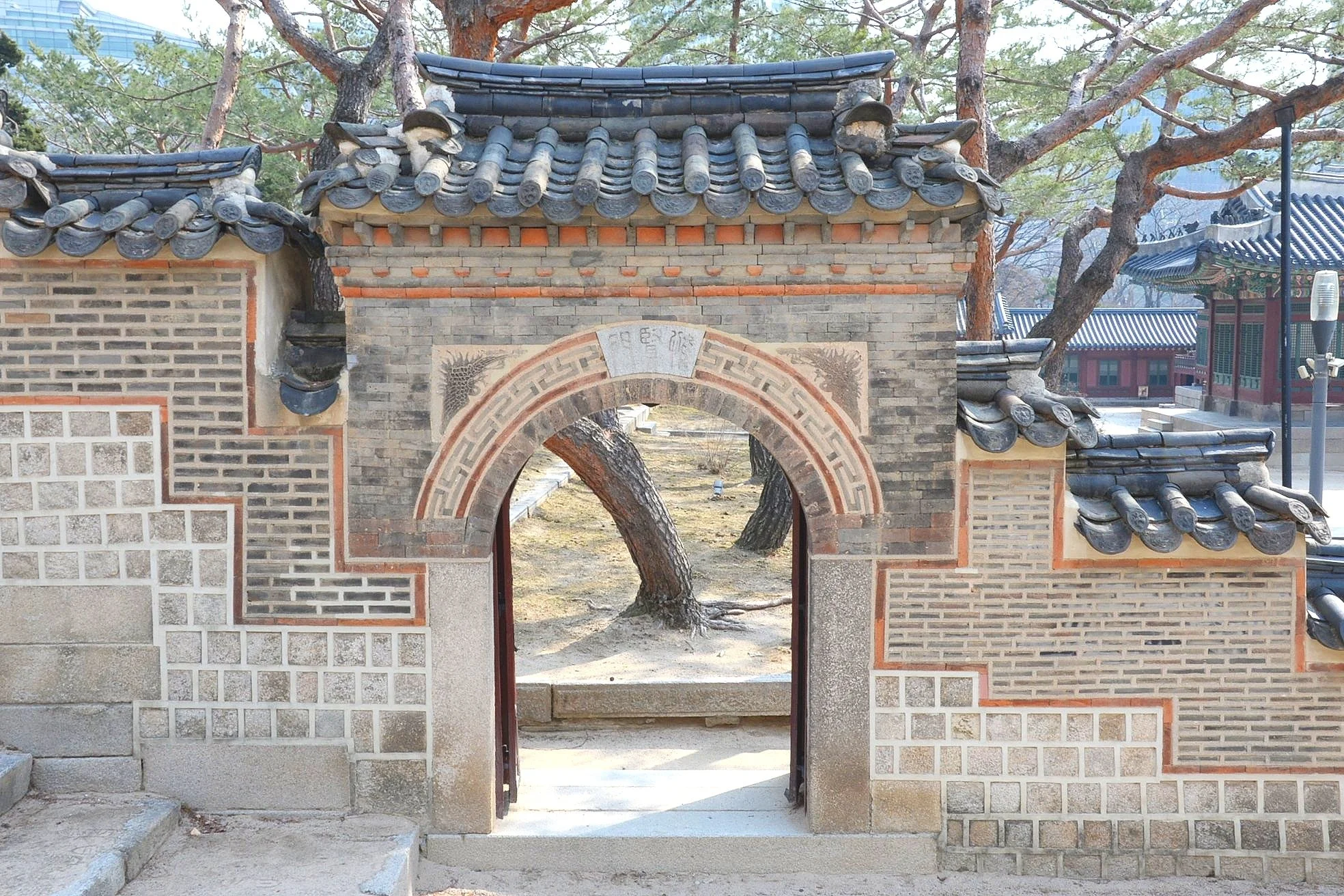Daehanmun Gate is the main entrance to Deoksugung. It abuts the main street leading north to Gwanghwamun Square and Gyeongbokgung Palace and is visible from City Hall Square. The colorful Joseon Era palace guard changes several times throughout the day to the delight of passers-by and visitors.
Junghwamun Gate leads to the central hall of Deoksugung Palace.
Jungwajeon Hall holds pride of placement within the palace. It would have been from this hall that King Seonjo met officials and visitors following his return to the capital in 1593. It was from this location that Seonjo and his ministers directed the remaining five years of the Imjin War.
This angle of Jungwajeon Hall bears out the stone markers indicating the positions his ministers and their staffs would stand, as well as the center, raised, pathway upon which only the king and his litter bearers could tread.
Seogeodang Hall was the primary living quarters of King Seonjo during his time of residence at Deoksugung. It was here, in this very building, that Seonjo passed away in 1608 at the age of 56.
The gates between palace sections are quite photogenic…and I couldn’t help myself. Here are a couple.
Dondeokjeon Hall was completed in 1903 as a royal guesthouse. Like much of the palace it was destroyed during the Japanese colonial period but has been restored to its original grandeur.
Seokjojeon Hall was completed in 1910 in the neoclassical style. It is where the Imperial Family lived until Gojong’s death in 1919 after which it was utilized by colonial government officials. It is now a museum dedicated to the short-lived Korean Empire (1897-1910).
If you can time it right—schedules are posted online, like nearly everything else in the city—the changing of the guard at Deoksogung Palace is worth viewing!












